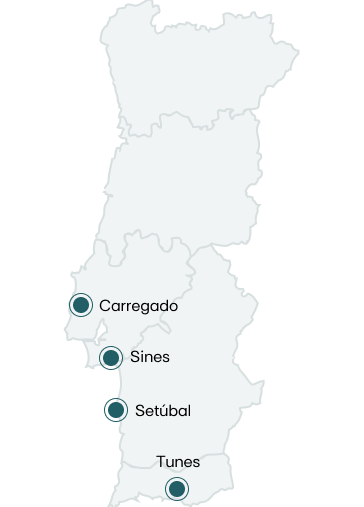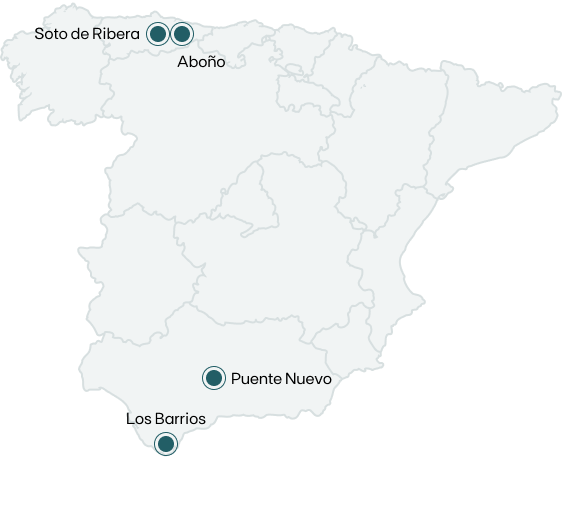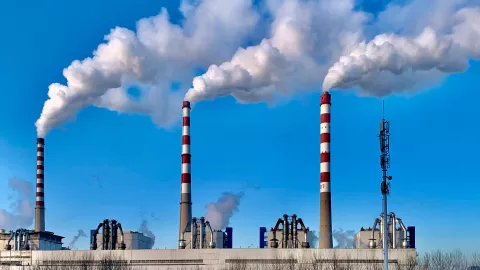EDP is accelerating decarbonization towards 100% green generation by 2030. Thermal power stations in Spain, Portugal and Brasil, which have supplied populations and industries for decades, will now be key to ensure the energy transition.
On the Albufeira seabed, a metal tower is home to fish, corals and a multitude of other organisms that give life to a new reef, a new ecosystem. The former coal mill of the Sines Thermoelectric Power Station, part of the EDP Art Reef, underwater exhibition created by the artist Vhils in partnership with EDP, is a small example of how the coal-fired power stations of the past have an important say in the future of energy and the planet.
This is the path that is being set by EDP, which aims not only to eliminate coal by 2025 and becoming 100% renewable by 2030, but also to turn these historic energy generation sites into incubators for new sources, new processes to ensure sustainability and the complete energy transition. Because we choose Earth, where there was coal, there will be green hydrogen, solar power, small hydro plants, energy storage batteries and forests, transforming thermal power stations from Portugal, Spain and Brazil into green hubs in their regions and countries. This year, EDP expects only 1% of its energy production to come from coal.
Four plants in Spain - Soto de Ribera and Aboño, in Asturias; Puente Nuevo and Los Barrios, in Andalucía; two in Portugal - Sines, in the district of Setúbal, Carregado, in the district of Lisbon; and part of the Pecém Plant, in Brazil, are fundamental axes of this process of transformation and revitalization of energy production. They represent an important share of the 17 billion euros to be invested by EDP up to 2026 in the development of projects to launch, expand and consolidate renewables and networks. All of this to guarantee the energy transition, the flexibility of electricity systems and the stability of the grids, while prioritizing the planet.

How do you decommission a thermal power plant?
The process of closing and decommissioning a power plant is long and meticulous. It begins with a request to the regulatory authorities and ends when the land on which the plant was installed is requalified and available for new uses.
- Decommissioning. The removal of chemicals, fuels, oils, gases and all other consumables from the production chain that can be easily transported. This phase can be preceded or accompanied by the removal of small equipment, furniture and materials that can be reused in other EDP production centers or even other industrial facilities.
- Dismantling and demolition. The dismantling of equipment for scrap recycling, from machinery to pipes and tanks. And the careful demolition of all structures, or those that cannot be reused, such as chimneys, cooling towers or turbines and generators.
- Requalification. Decontamination and environmental verification of land and other structures so that they can be safely used for new purposes, whether industrial, urbanization, agriculture or renaturalization.
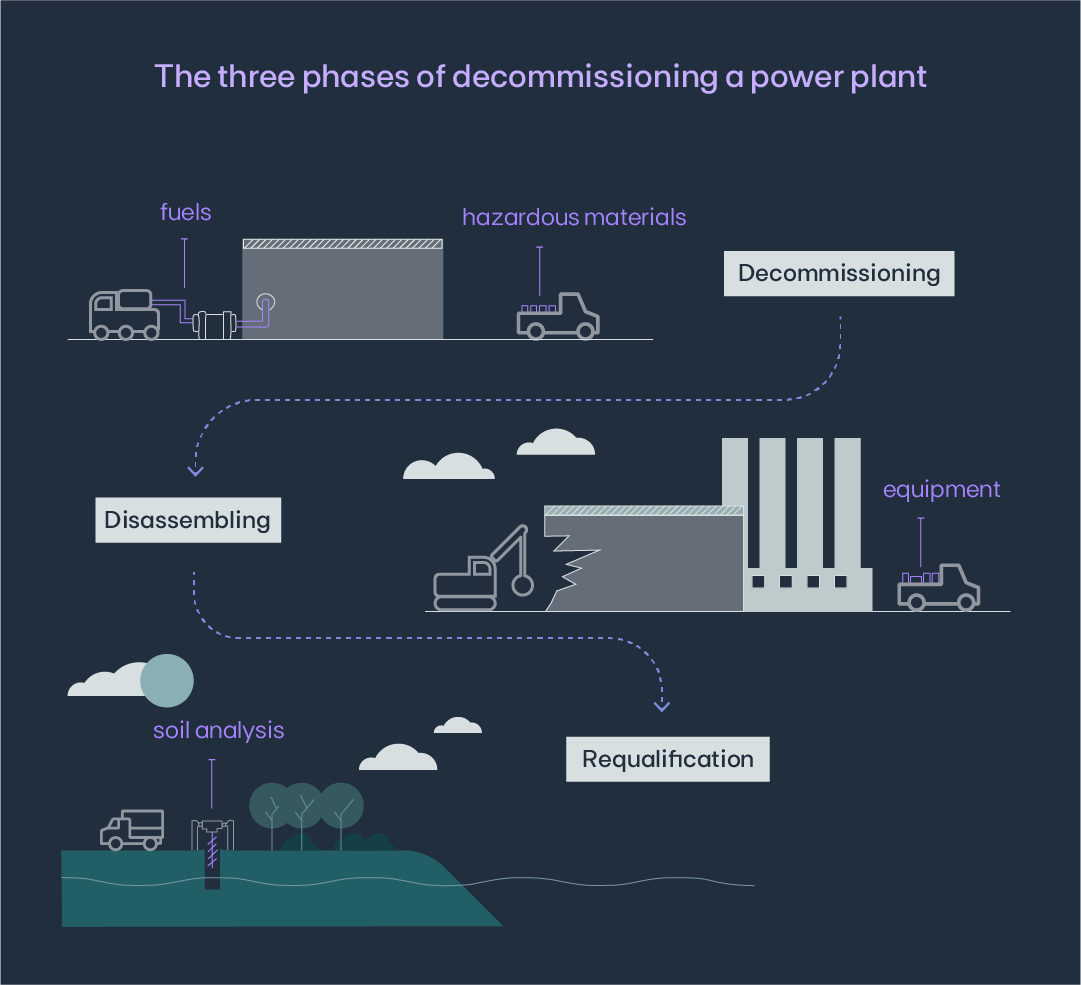
The decommissioning of a thermal power plant is carried out by teams specialized in the various phases and by an on-site team, who truly has the experience and in-depth knowledge of the site, of the changes made over the years and of all the constraints that may exist.
And the communities that have been supported and benefited over the decades by the operation of these thermal power plants - whether through local economic development and employment, or through social, sporting or cultural initiatives supported by EDP - are also an important part of the transformation process. After closure, the transfer of equipment resulting from decommissioning to local entities; the continuity of community programs - such as Entama, in Spain, or Sharing with Energy and Used Car Donation Program, in Portugal; and the creation of specific projects to support closure - such as the Sines' Active Future program - are all part of EDP's overall strategy for a fair energy transition, leaving no one behind.
Circular economy: securing the value that still exists in a closed power plant
The end of a fossil fuel power plant, for the sake of the environment and the energy transition, does not mean that everything associated with that site and generation process should be eliminated or forgotten. There is a lot of value in a decommissioned thermal power plant, tons of waste and materials that can be reused; plenty of equipment with other possible uses; and infrastructure capable of hosting innovations, industries and technologies designed for a green future.
Thanks to the evolution of recycling and reuse techniques, and with a focus on the circular economy - which includes the use of materials in the EDP Art Reef, for example - EDP aims to achieve up to 90% recycling throughout the energy value chain. And the decommissioning of thermal power stations is at the forefront of this circularity journey. At the Carregado plant alone, for example, it was possible to recycle 92% of the 100,000 tons of waste collected during the dismantling and demolition phase.
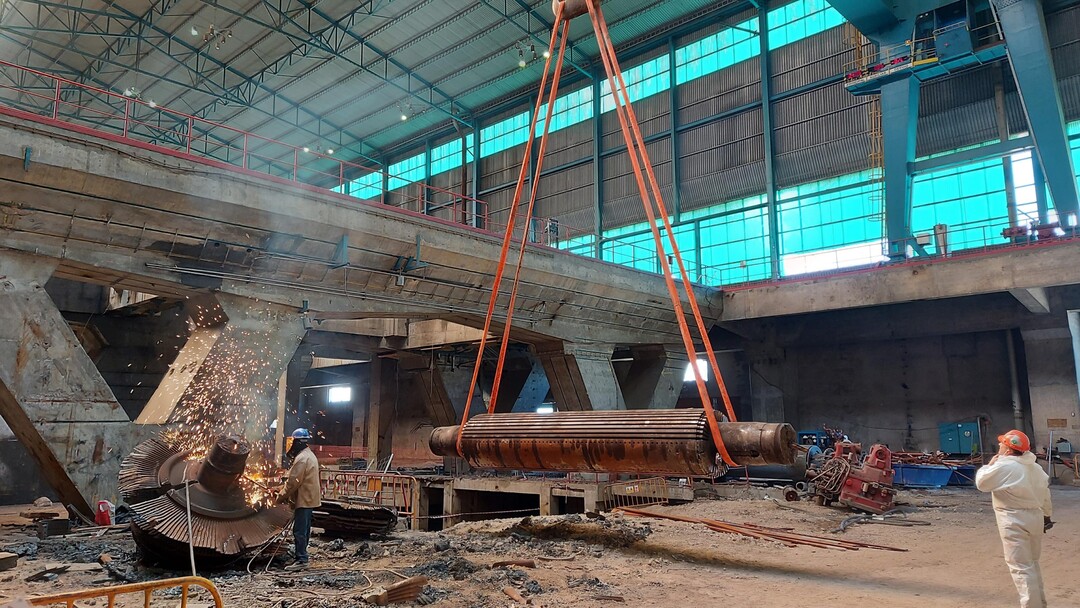
EDP power plants: success stories on the road to a sustainable future
Between the sites that are already in a more advanced decommissioning process and those that will continue to operate until 2025 or a little beyond, EDP's power plants have their green path well marked. Below we detail the route that is already being taken by a total of nine plants in Spain, Portugal and in the particular case of Brazil. A path that branches out through the various renewable energy sources that make up EDP's portfolio, aimed at hybridization, energy storage and complementarity as ways of guaranteeing the solidity of each project and the entire power system, protecting local communities.
